VERY RARE! WWII 1943 USAAF Navigators FLAK Map LIVORNO Italy Mission
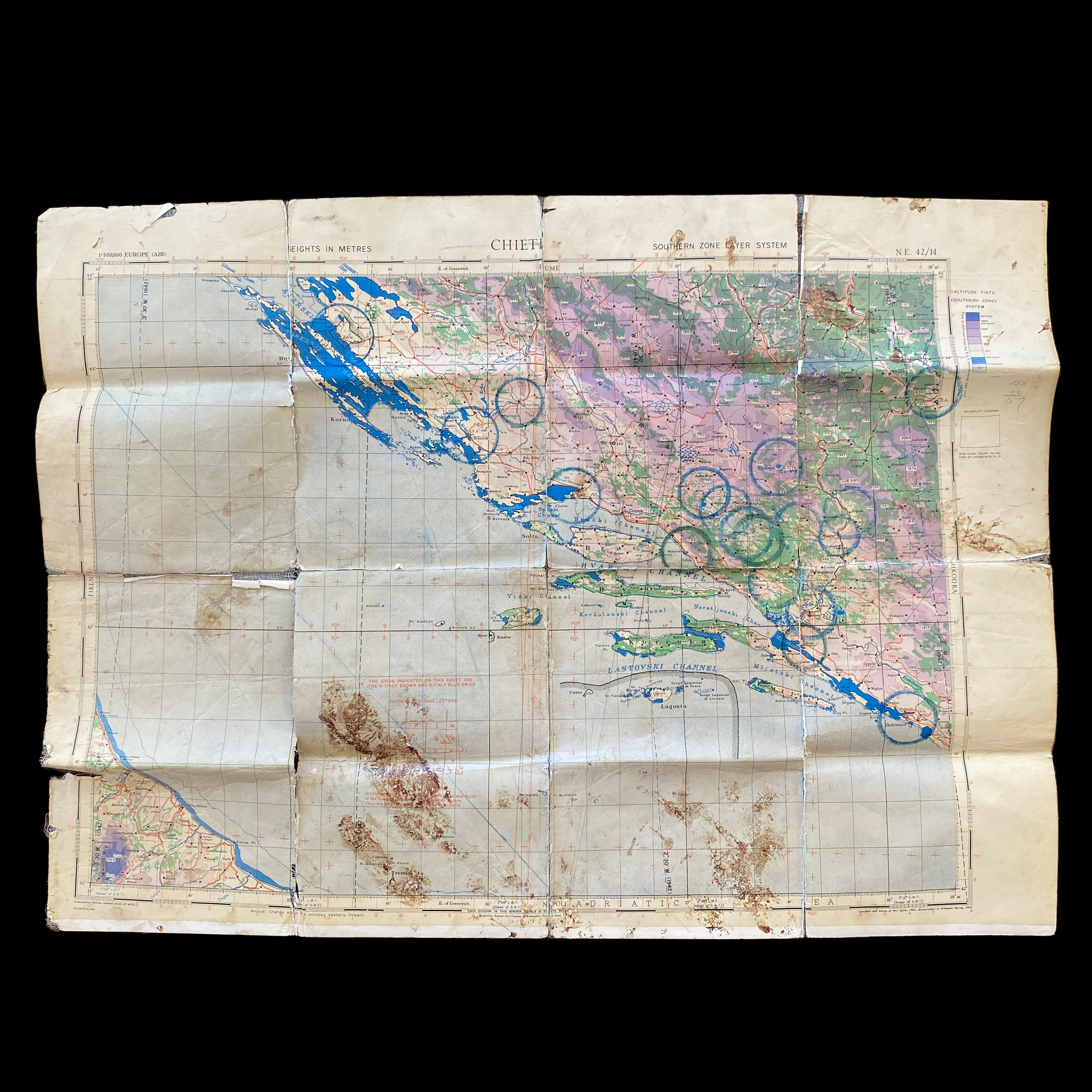

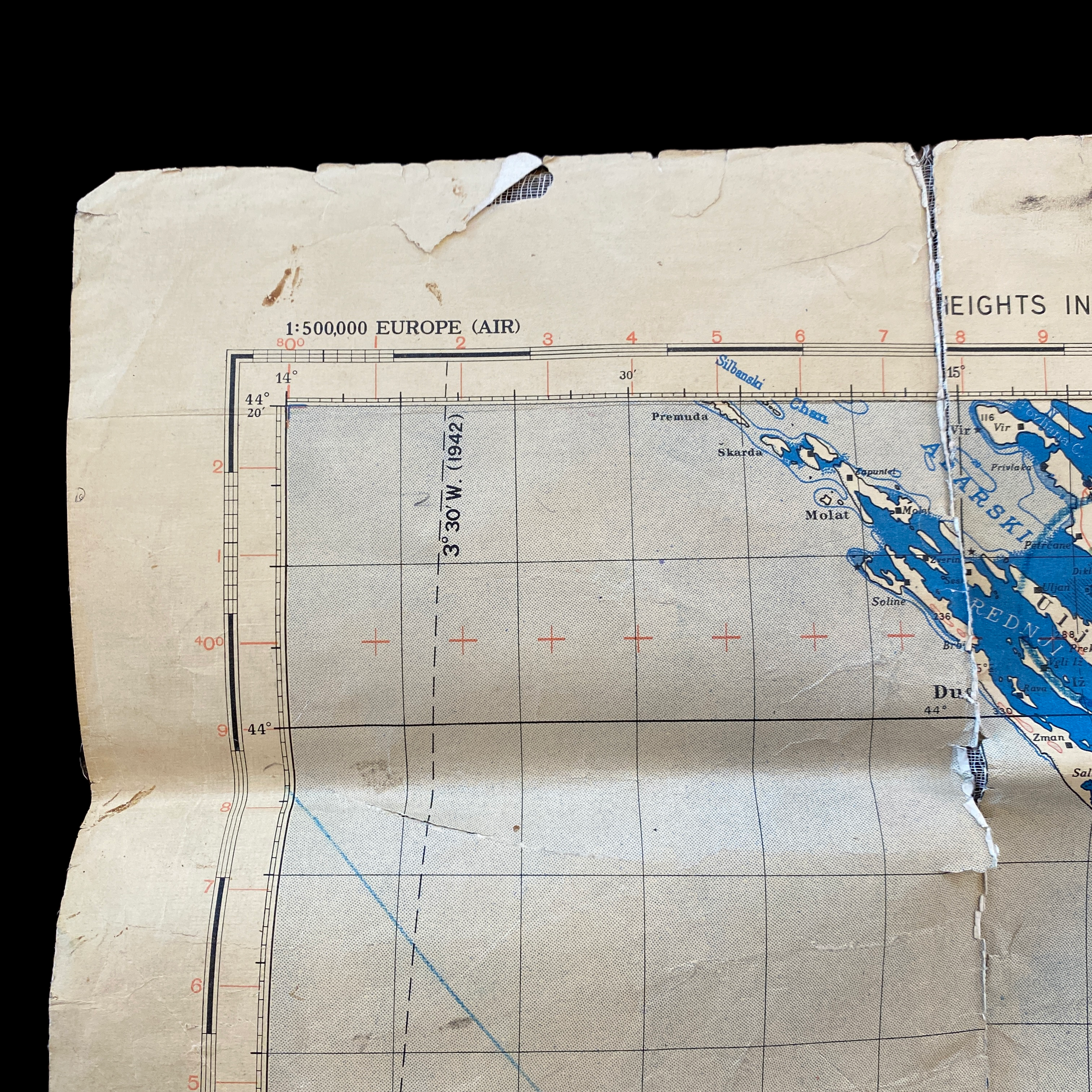

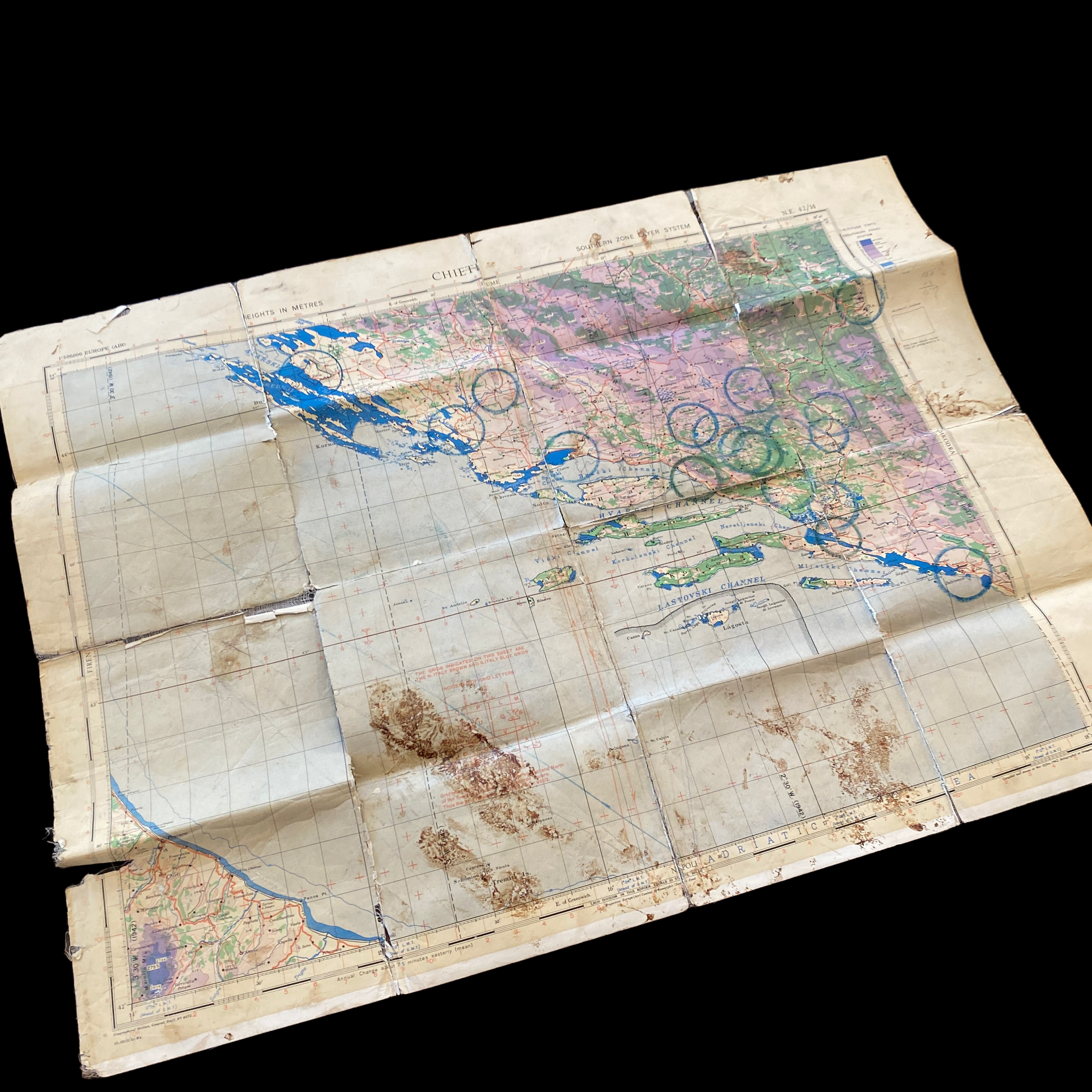
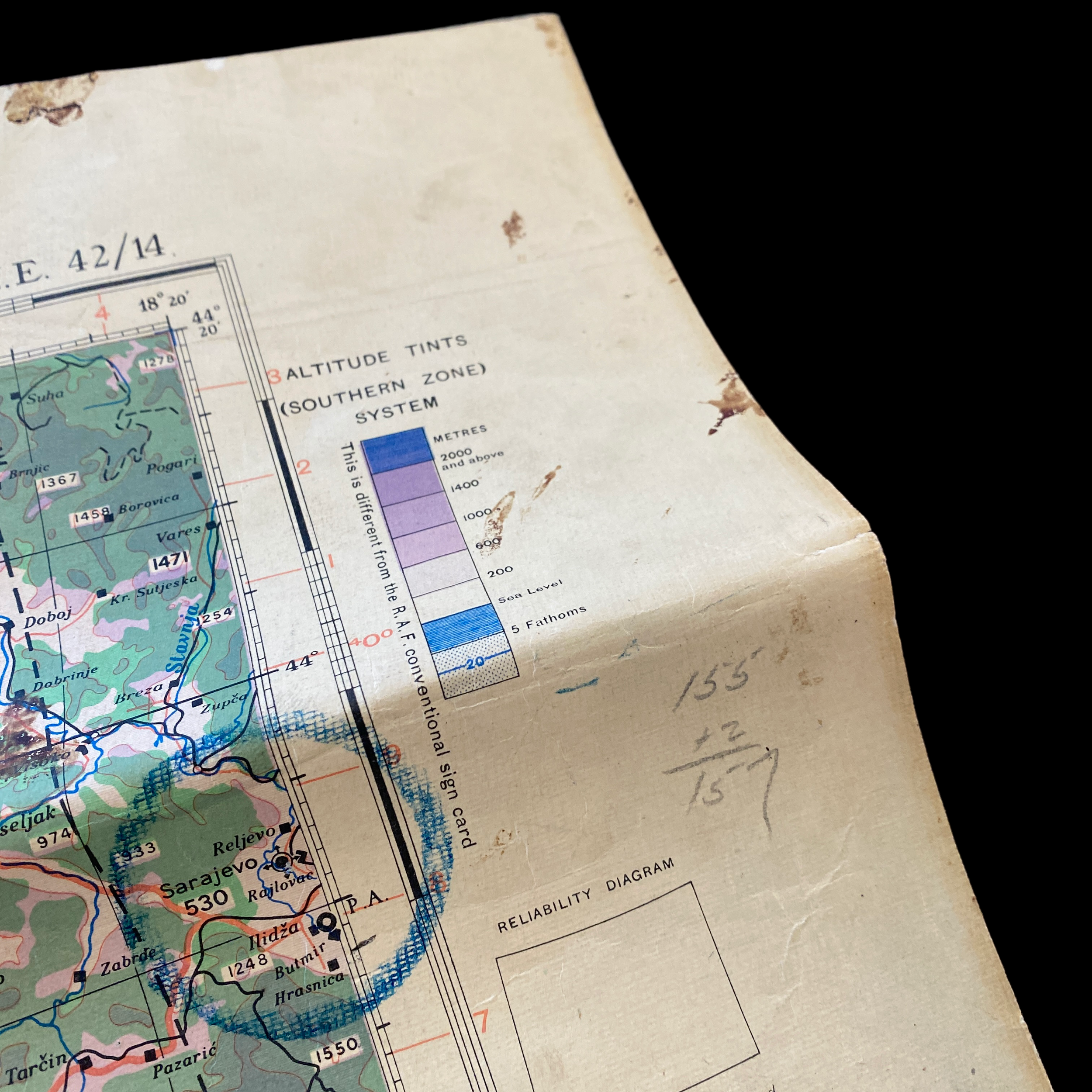
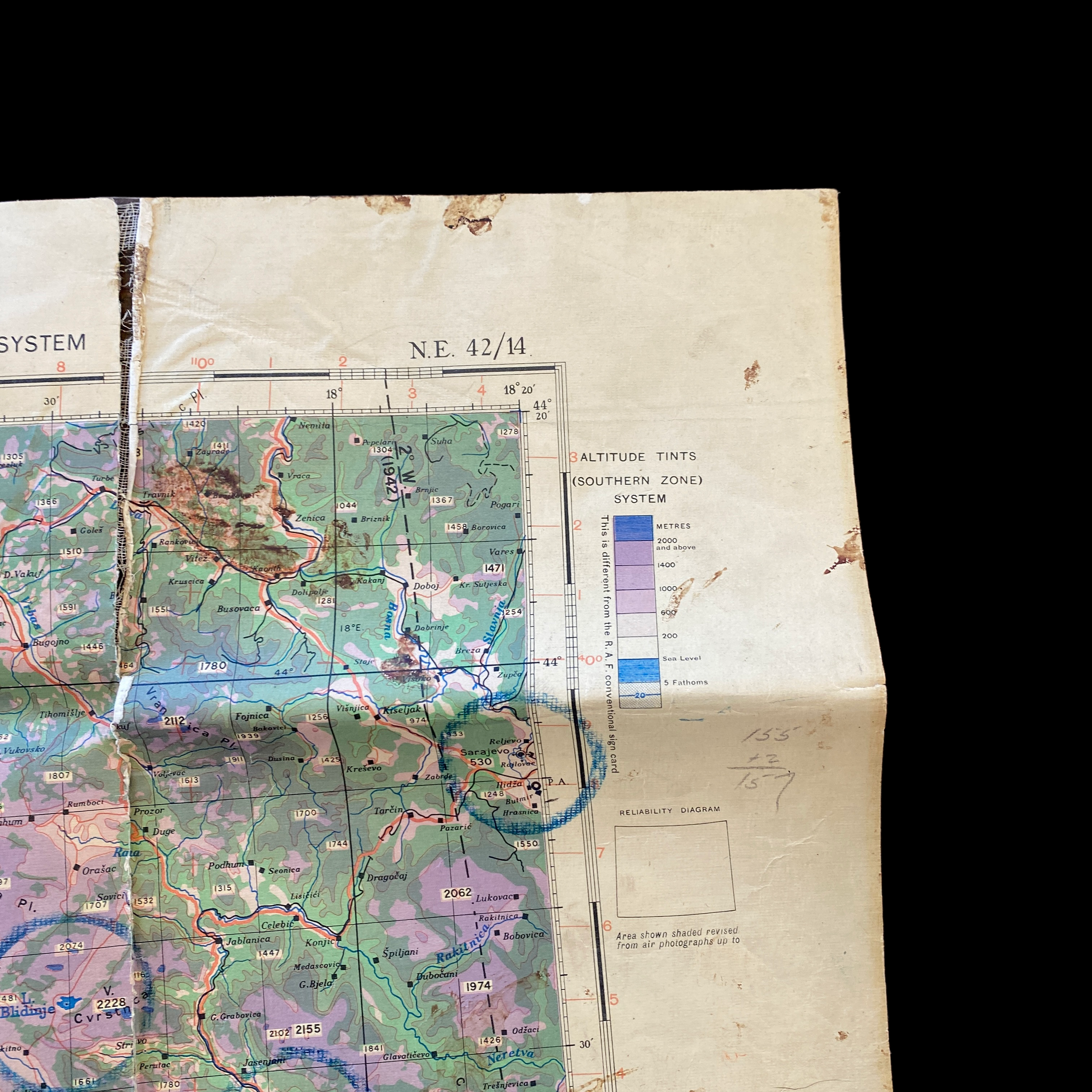
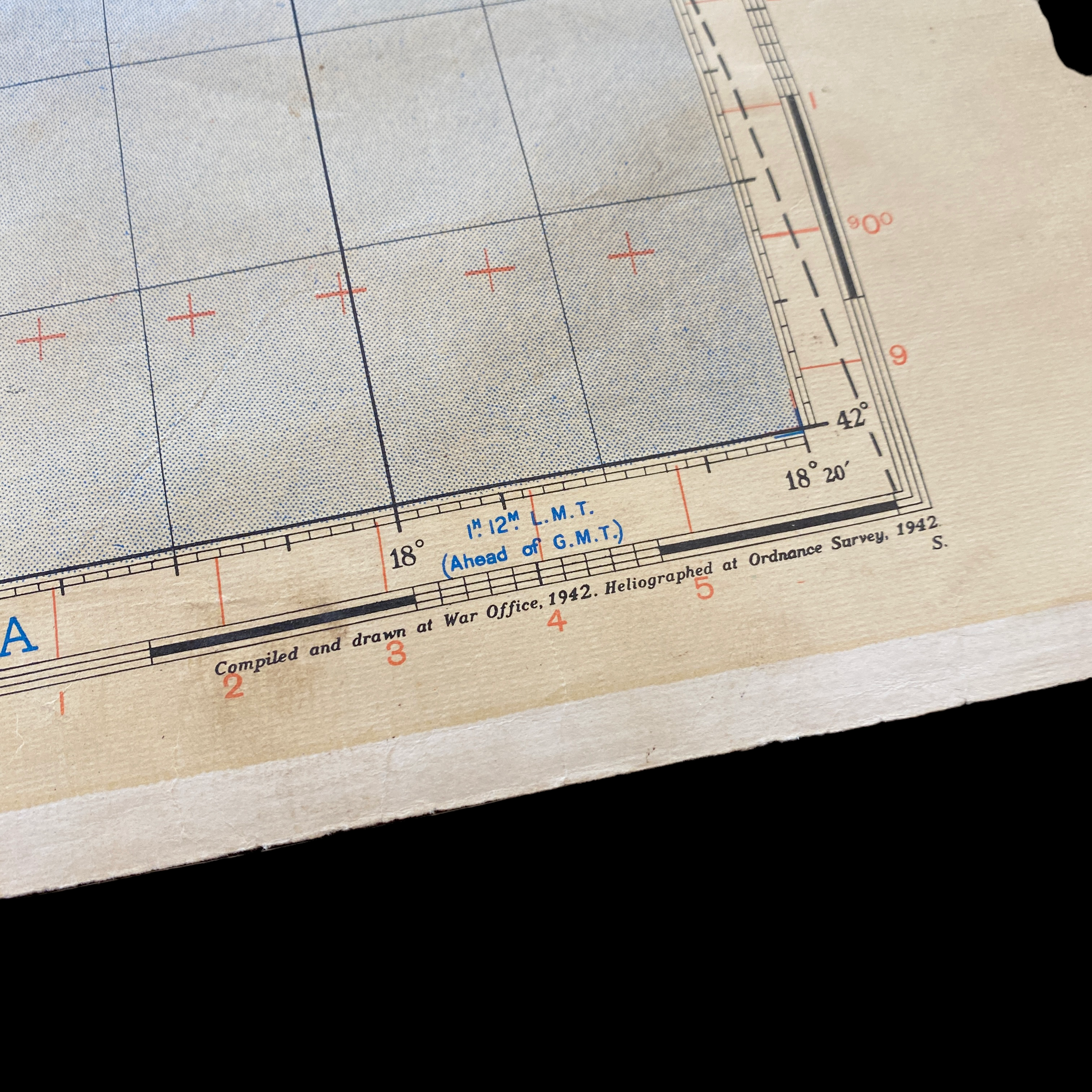
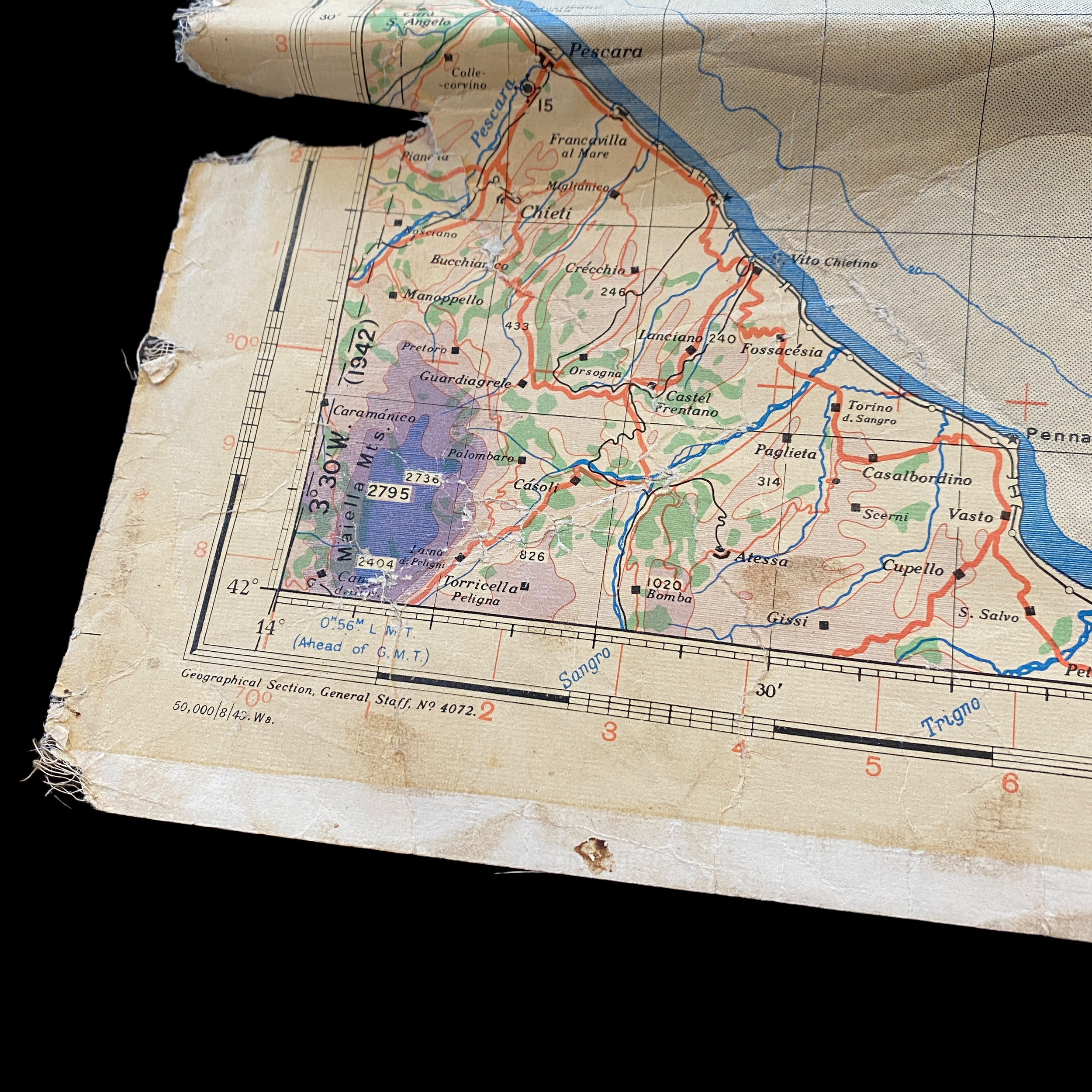

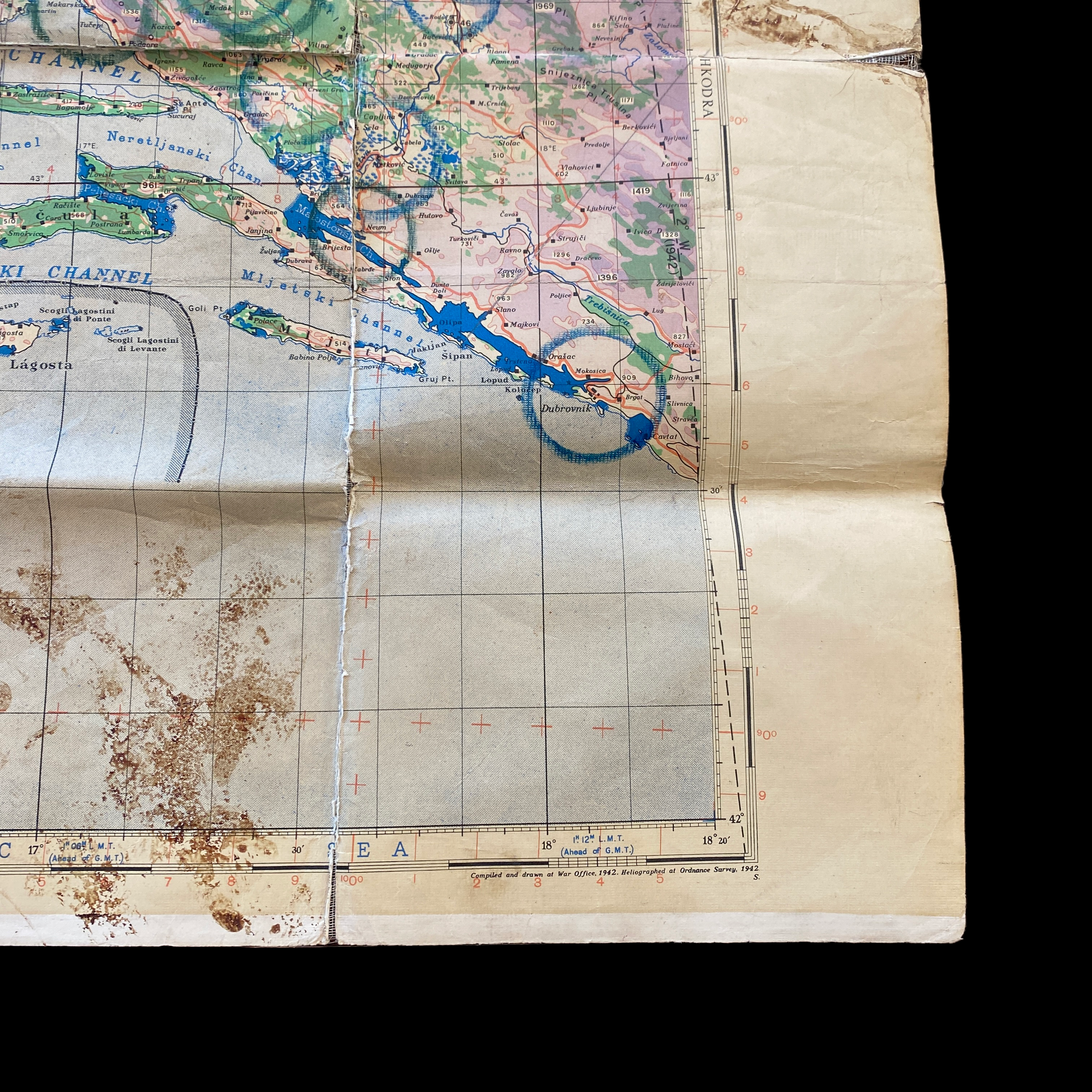
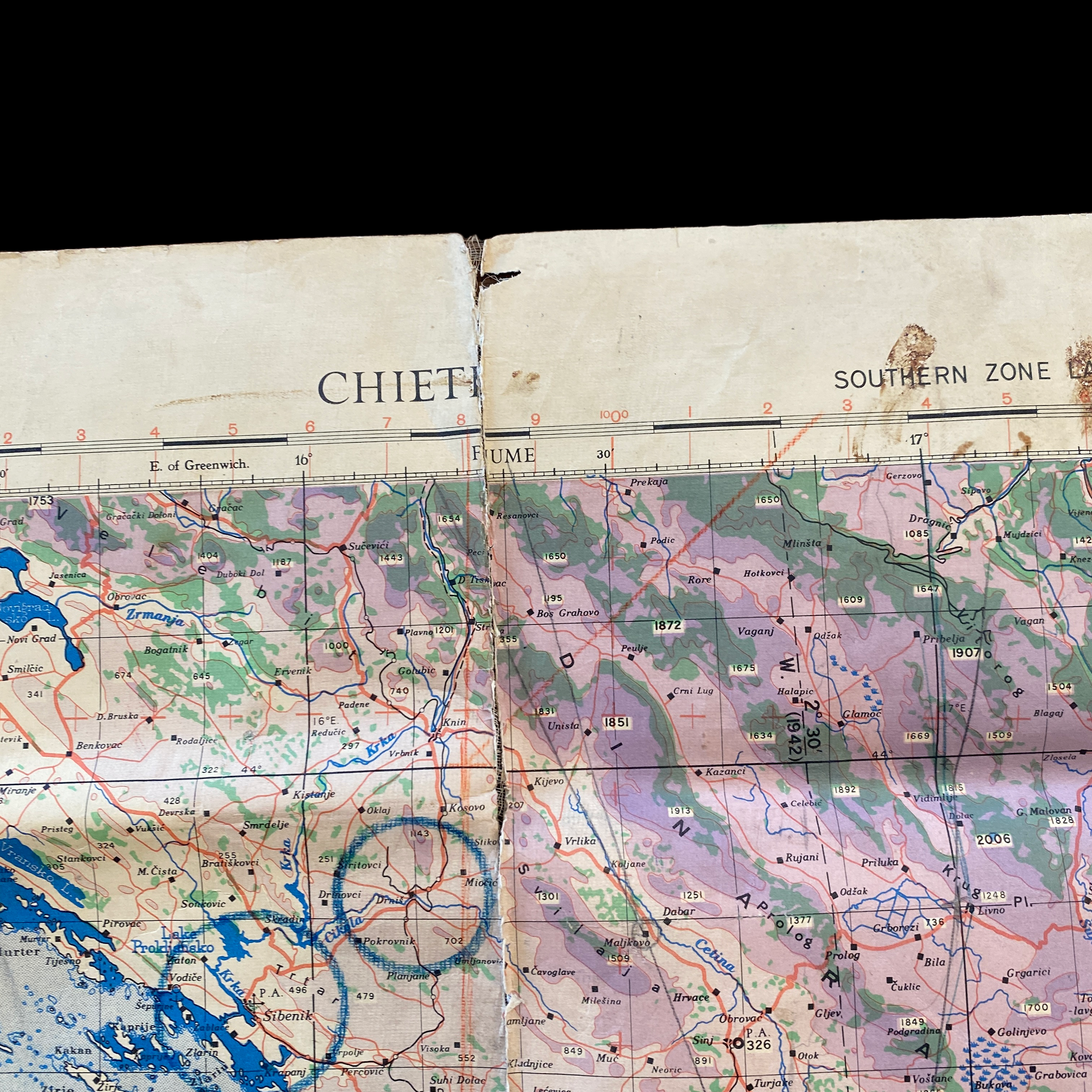
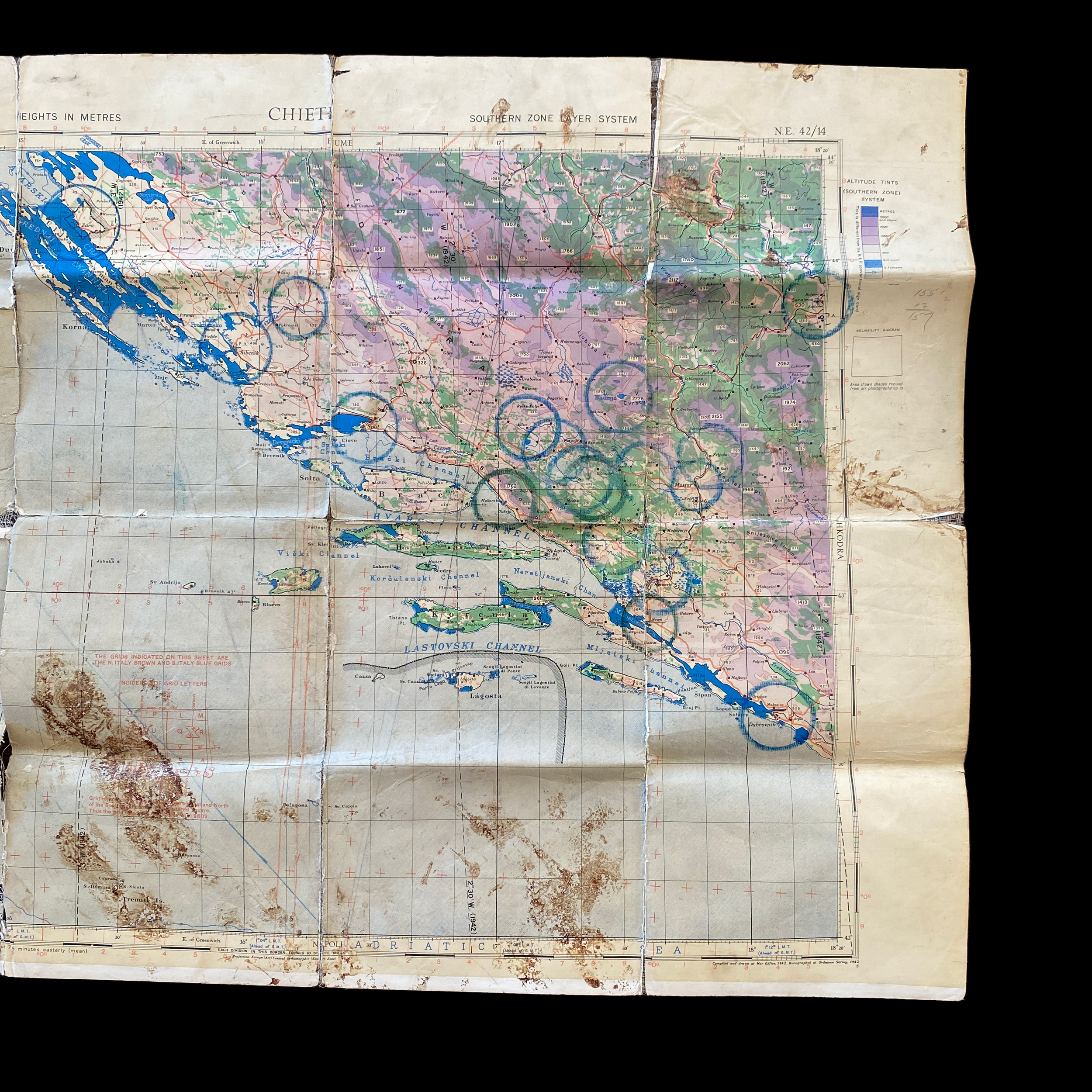
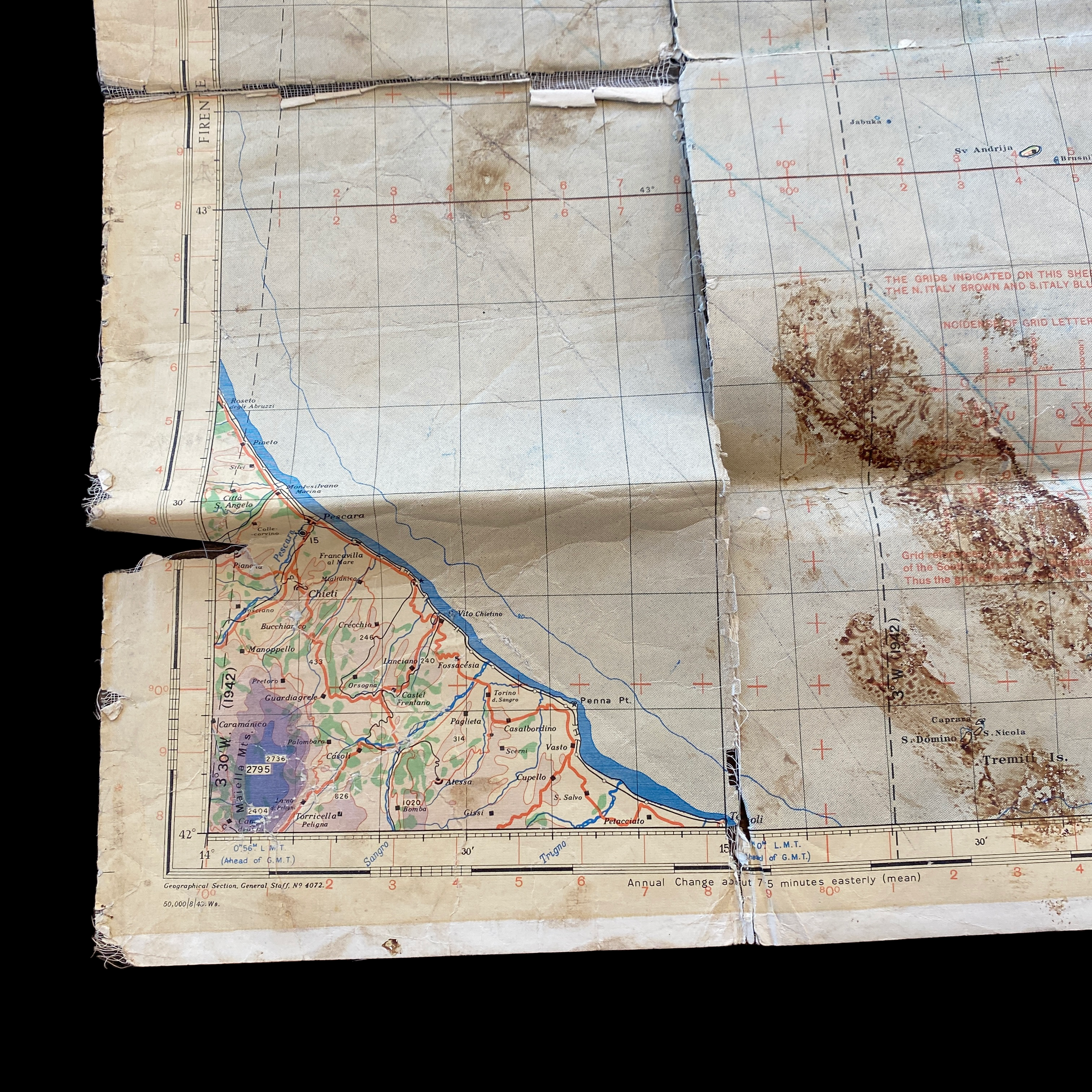
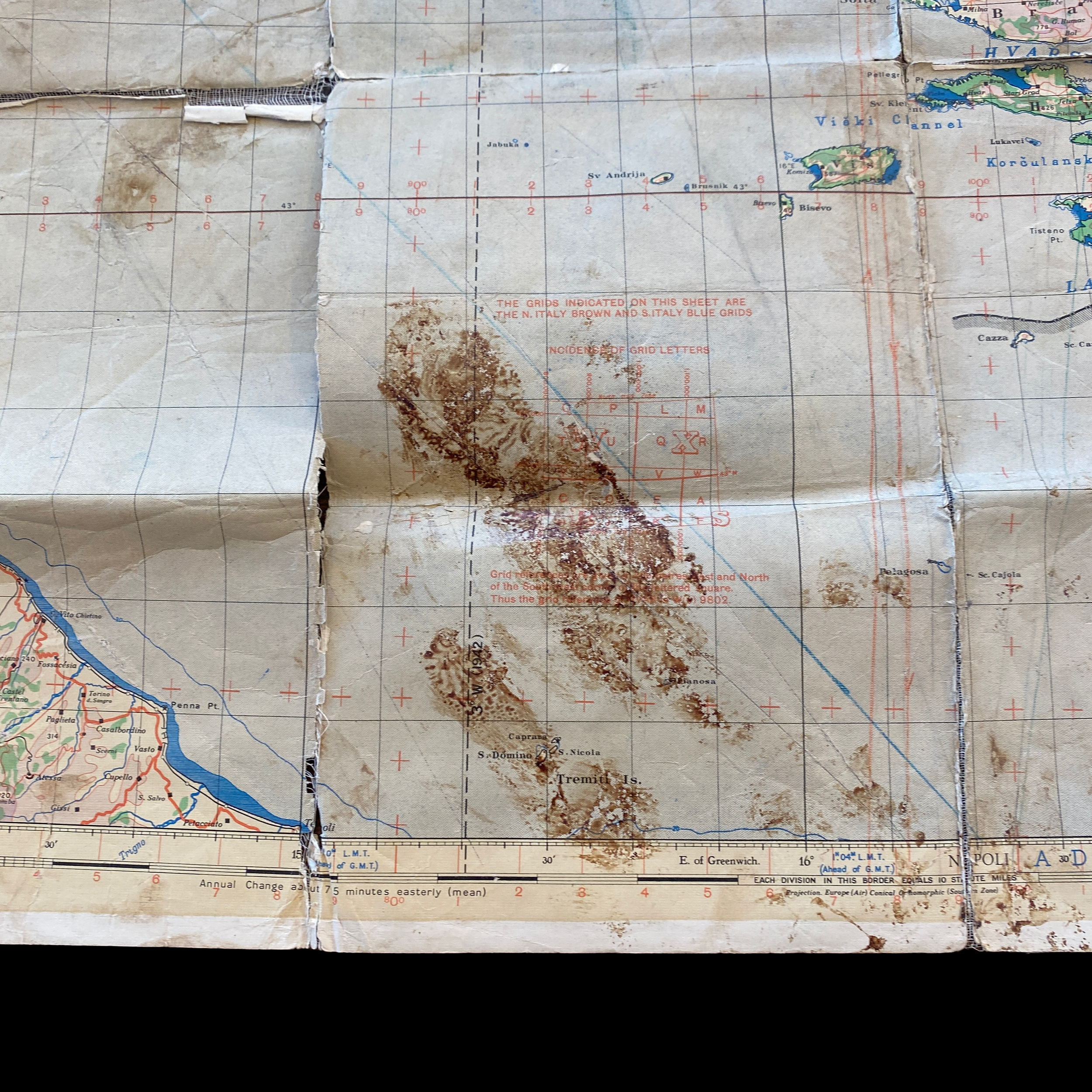
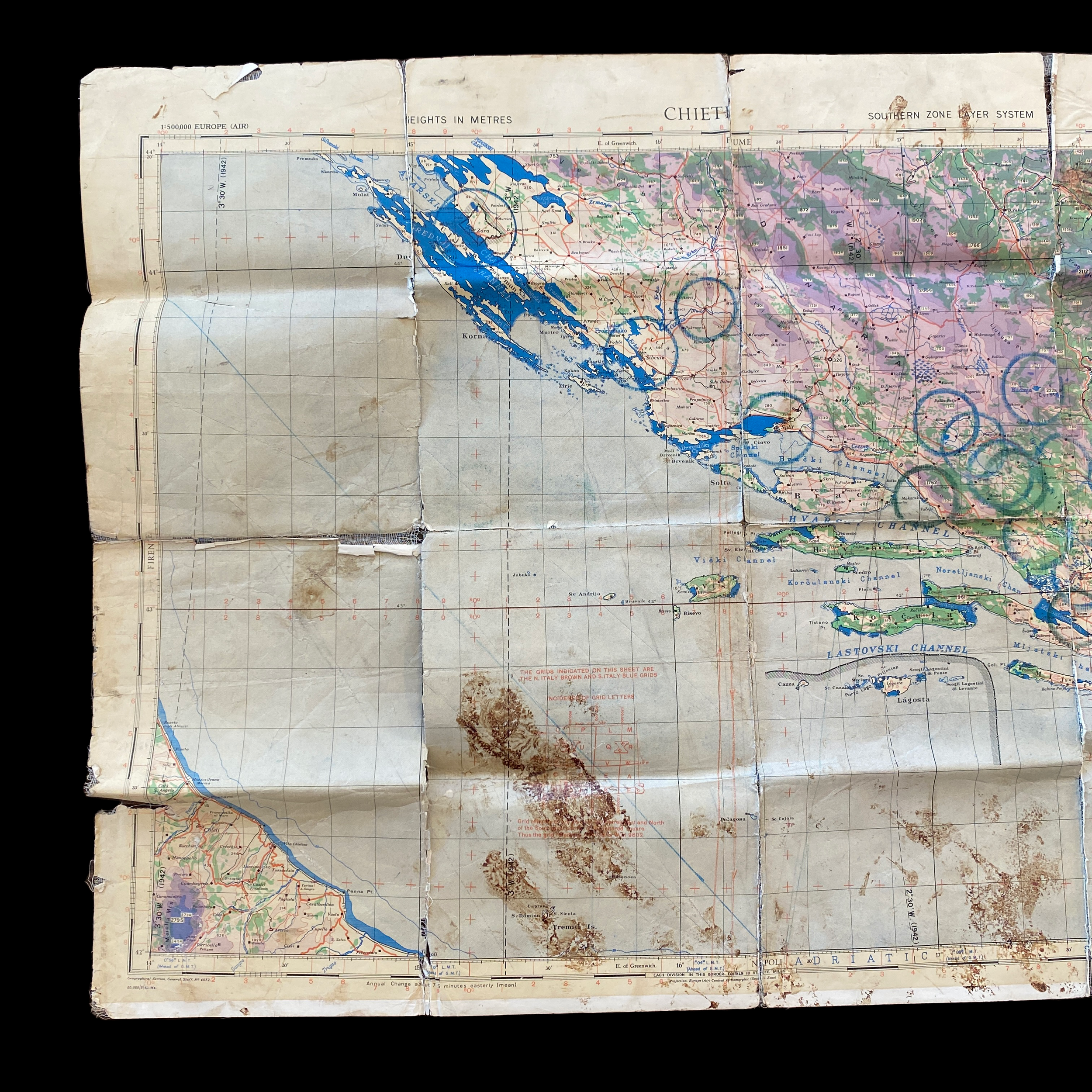
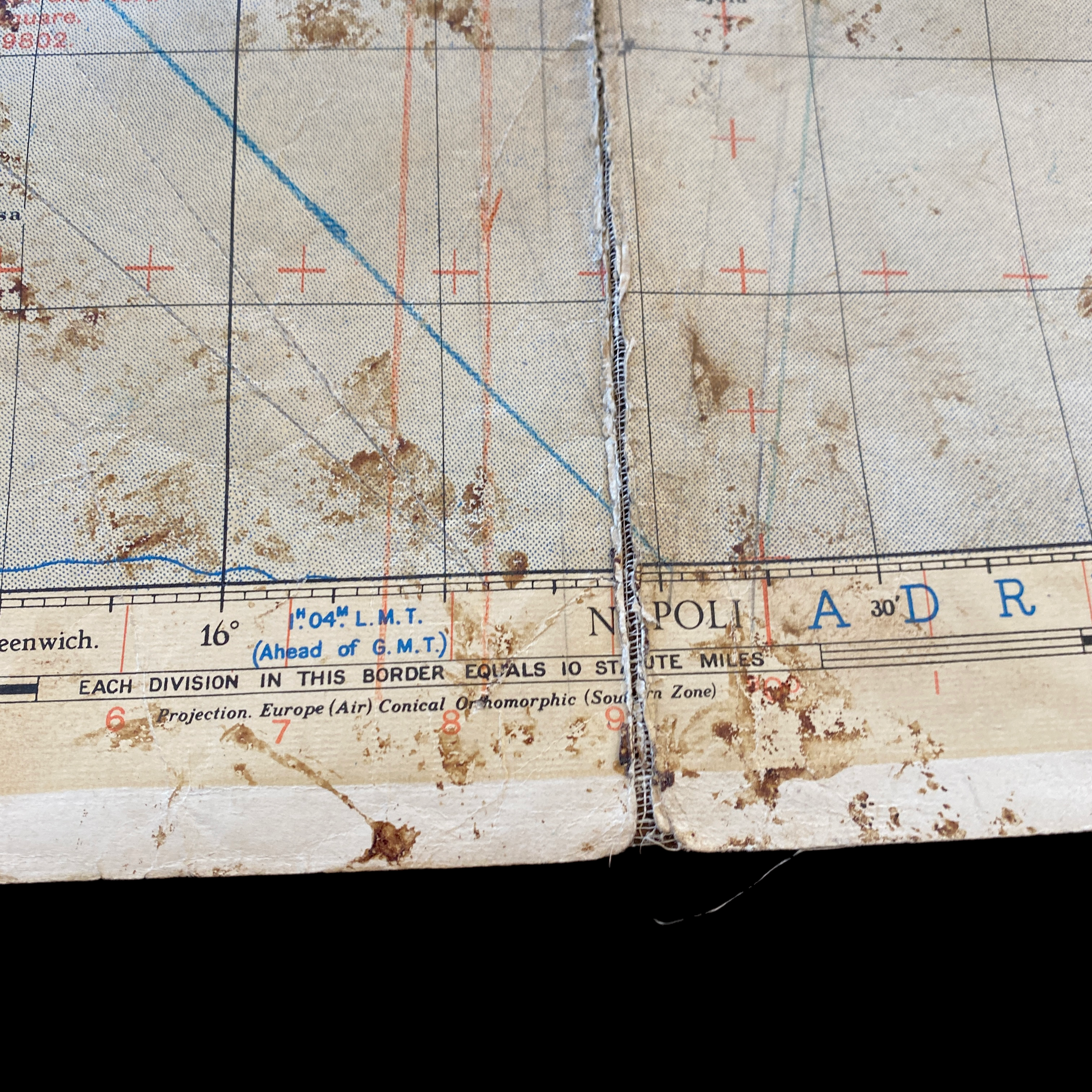
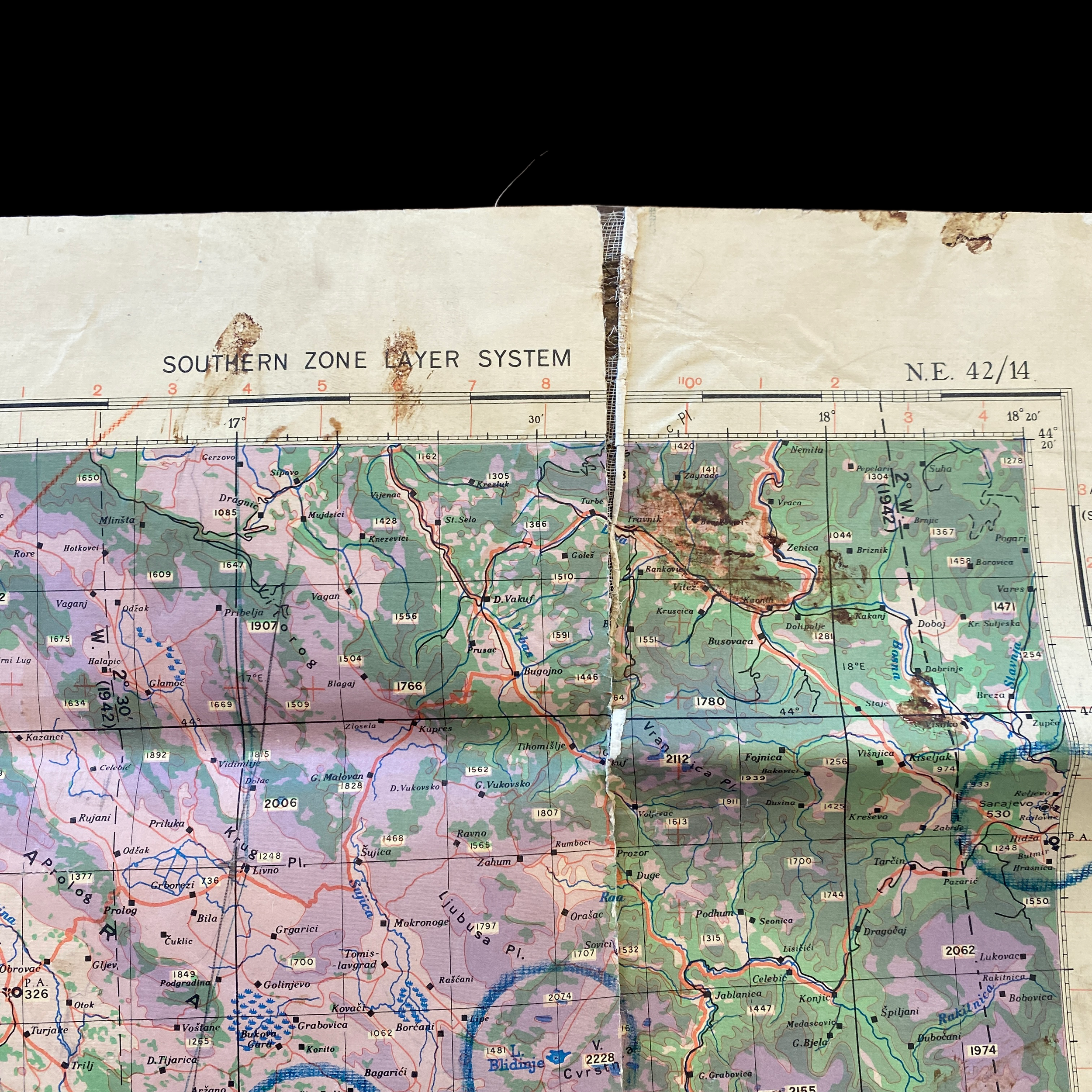
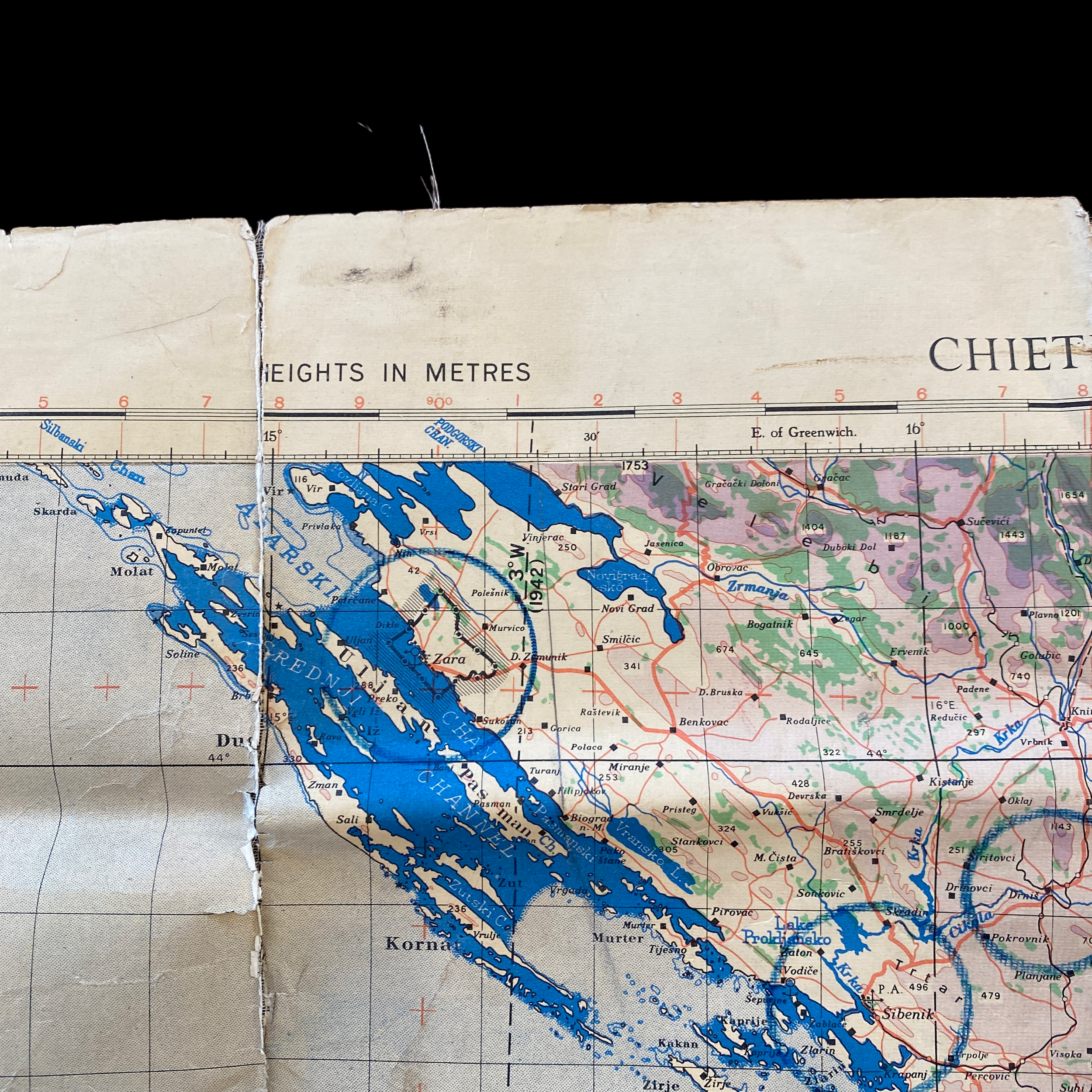
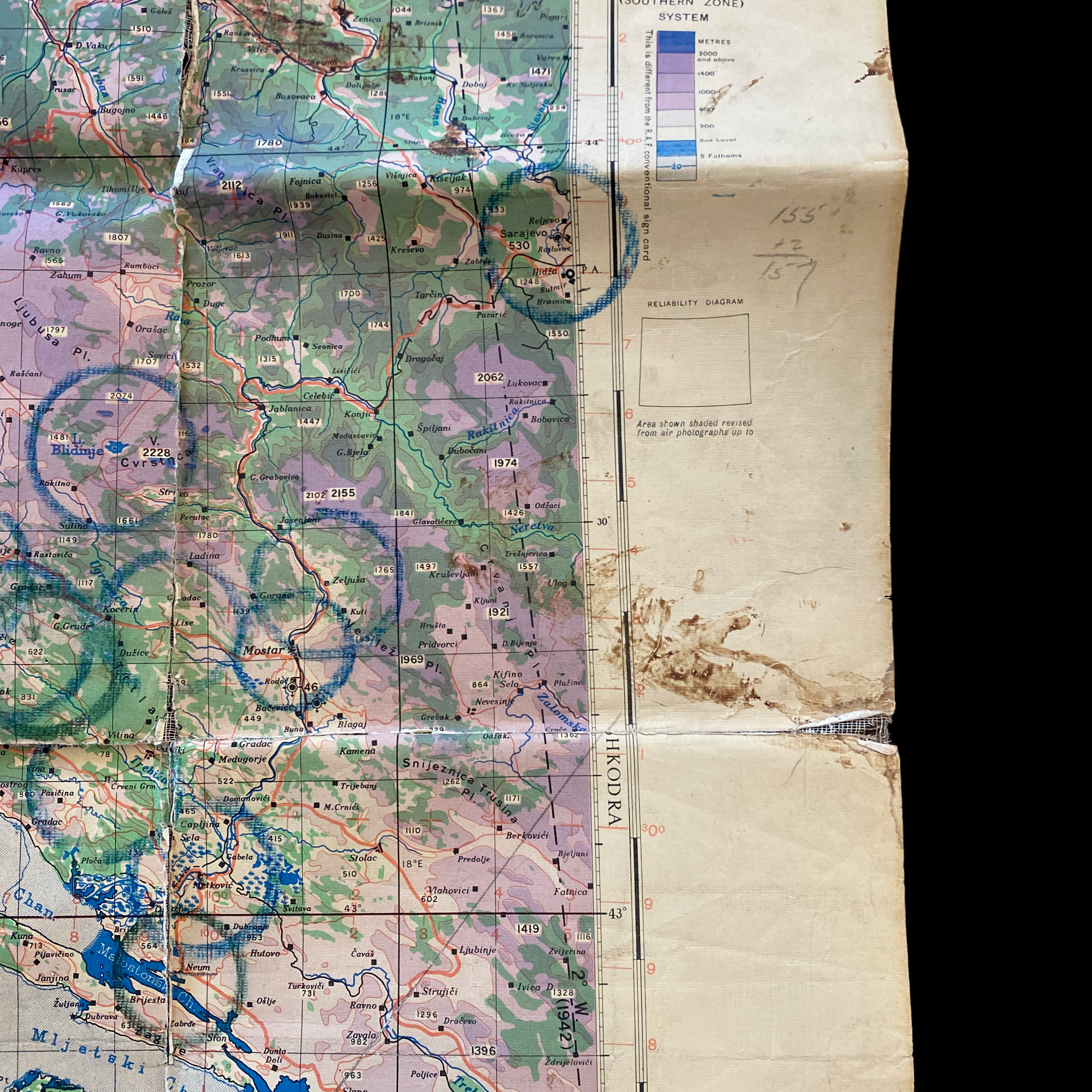

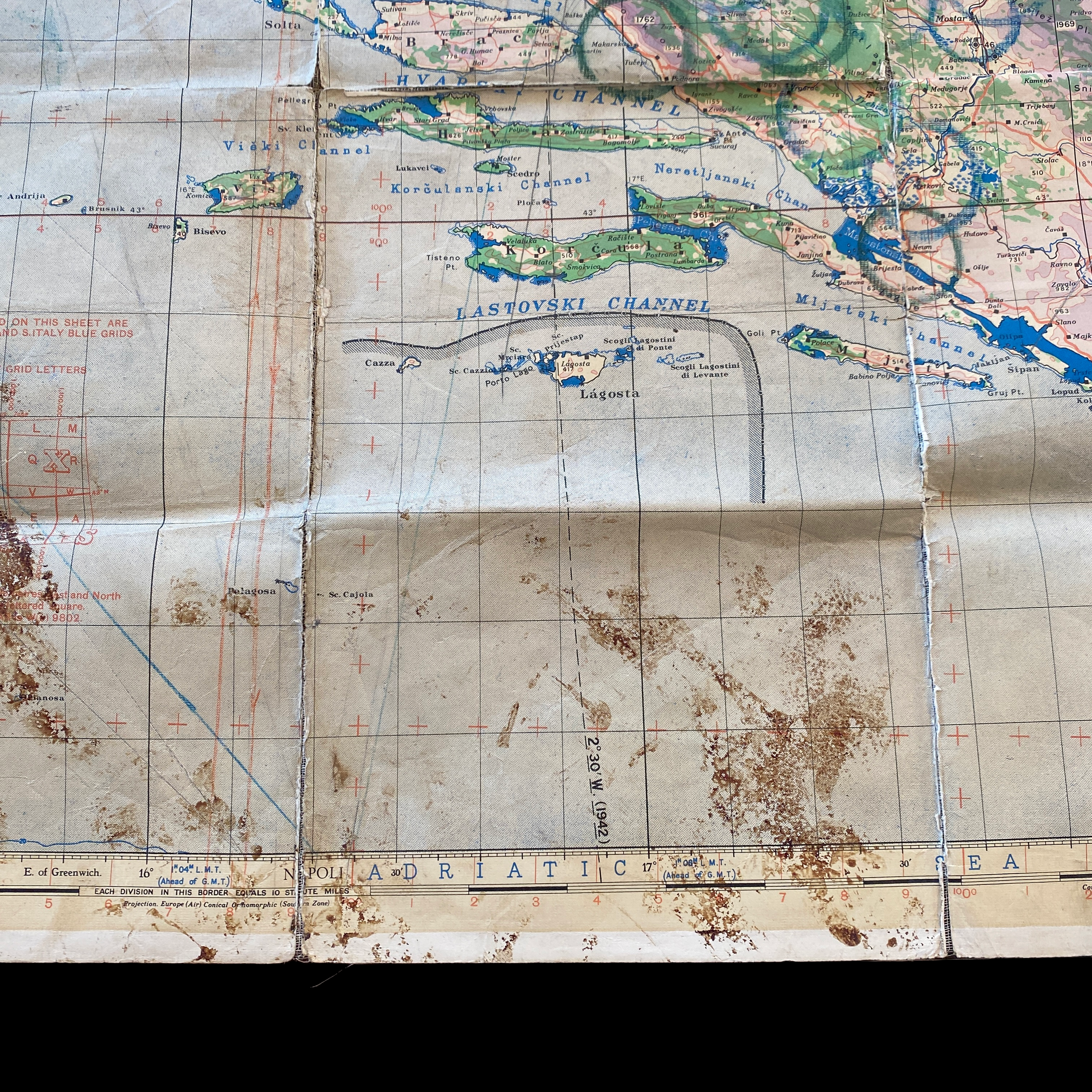
VERY RARE! WWII 1943 USAAF Navigators FLAK Map LIVORNO Italy Mission
Comes with hand-signed C.O.A.
This is an incredibly rare and highly collectible World War II map of Chieti, Italy, dated 1943. This U.S.A.A.F. FLAK map was heavily used by the U.S. bombardiers, pilots, and navigators during bombing raids in Europe, with multiple mission marks and navigation lines.
Chieti was a significant location during World War II, as it was the site of several bombing raids by the Allied forces. This map was used by pilots and navigators to plan and execute these missions. The map also includes an improvised hand-drawn FLAK map, showing the locations of German anti-aircraft guns in the region.
This map was used by the USAAF Navigator during their bombing raids in the Italian Theater. This specific map was used during the infamous Bombing of Livorno. The first raid on Livorno by the USAAF took place on 28 May 1943, when a hundred Boeing B-17 Flying Fortress bombers of the 12th Air Force took off from bases in North Africa and attacked the harbour, the oil refinery and the marshalling yard. The objectives were hit (the maritime station was destroyed), but a large part of the bombs (roughly 180 tons) fell on the city, causing widespread damage, especially in the city centre and the Venezia Nuova district.
A second, identical raid by 97 B-17 bombers of the 12th Air Force, targeting the same objectives, took place exactly a month later, and had identical results; about 250 tons of bombs were dropped, hitting both the objectives (the industrial area and the central station were badly damaged) and the city, causing widespread destruction.
Further raids, targeting the harbour, took place on 24, 25, 29 and 30 March 1944 and 1 April 1944, all by the USAAF; on 2 April thirteen RAF bombers attacked again the harbour, whereas on 14 April the USAAF bombed the marshalling yard, followed that night by 24 RAF bombers that attacked the harbour. On 15 April 1944 U.S. bombers attacked the marshalling yard, and on the following day five RAF bombers bombed the harbour; on 19 April twenty-three British bombers attacked the harbour, and 24 RAF bombers did the same on 23 April. More raids took place on 29 April (22 RAF bombers), 30 April (six RAF bombers), 1 May (six RAF bombers, targeting the marshalling yard), 2 May (twelve RAF bombers), 9 May (eight RAF bombers), 19 May (USAAF, targeting the harbour), 7, 13 and 21 June (all by USAAF, against the port). The heaviest raids of 1944 were the ones that took place on 19 May and 7 June, hitting again the city centre and destroying the "Black Zone"; there were no casualties thanks to its evacuation a few months before.
A FLAK map, also known as an anti-aircraft artillery (AAA) map, was used by military forces during World War II to identify the locations of enemy anti-aircraft guns. These guns, also known as FLAK guns, were used to shoot down enemy aircraft, and were a significant threat to pilots and air crews.
FLAK maps were used by pilots and navigators to avoid areas with heavy concentrations of enemy anti-aircraft guns. They could also be used to plan bombing missions, with the goal of destroying enemy FLAK guns to reduce the threat to Allied aircraft.
FLAK maps were often hand-drawn and improvised, as the locations of enemy anti-aircraft guns could change quickly. They were an important tool for the Allied forces during World War II, and were used to help protect pilots and air crews from the threat of enemy FLAK guns.
German FLAK, or anti-aircraft artillery, was a significant threat to US bombing crews in Italy during World War II. FLAK guns were used by the German military to shoot down enemy aircraft, and posed a significant danger to Allied pilots and air crews.
FLAK was often concentrated in areas where the German military anticipated Allied bombing raids. This could include major cities, industrial centers, and military bases. The FLAK guns would be positioned in defensive formations, with the goal of shooting down as many enemy aircraft as possible.
The presence of heavy FLAK made bombing missions over Italy dangerous and difficult for US crews. The FLAK guns could cause significant damage to aircraft, and the threat of being shot down was always present. Despite the challenges, US bombing crews continued to carry out their missions, often at great personal risk.
Overall, German FLAK was a significant threat to US bombing crews in Italy during World War II. The bravery and sacrifice of these airmen will never be forgotten.
This map is a rare and fascinating piece of history, providing a glimpse into the strategic planning and operations of the Allied forces during World War II. It is a must-have for any serious collector of World War II memorabilia. Don't miss your chance to own this historic map.